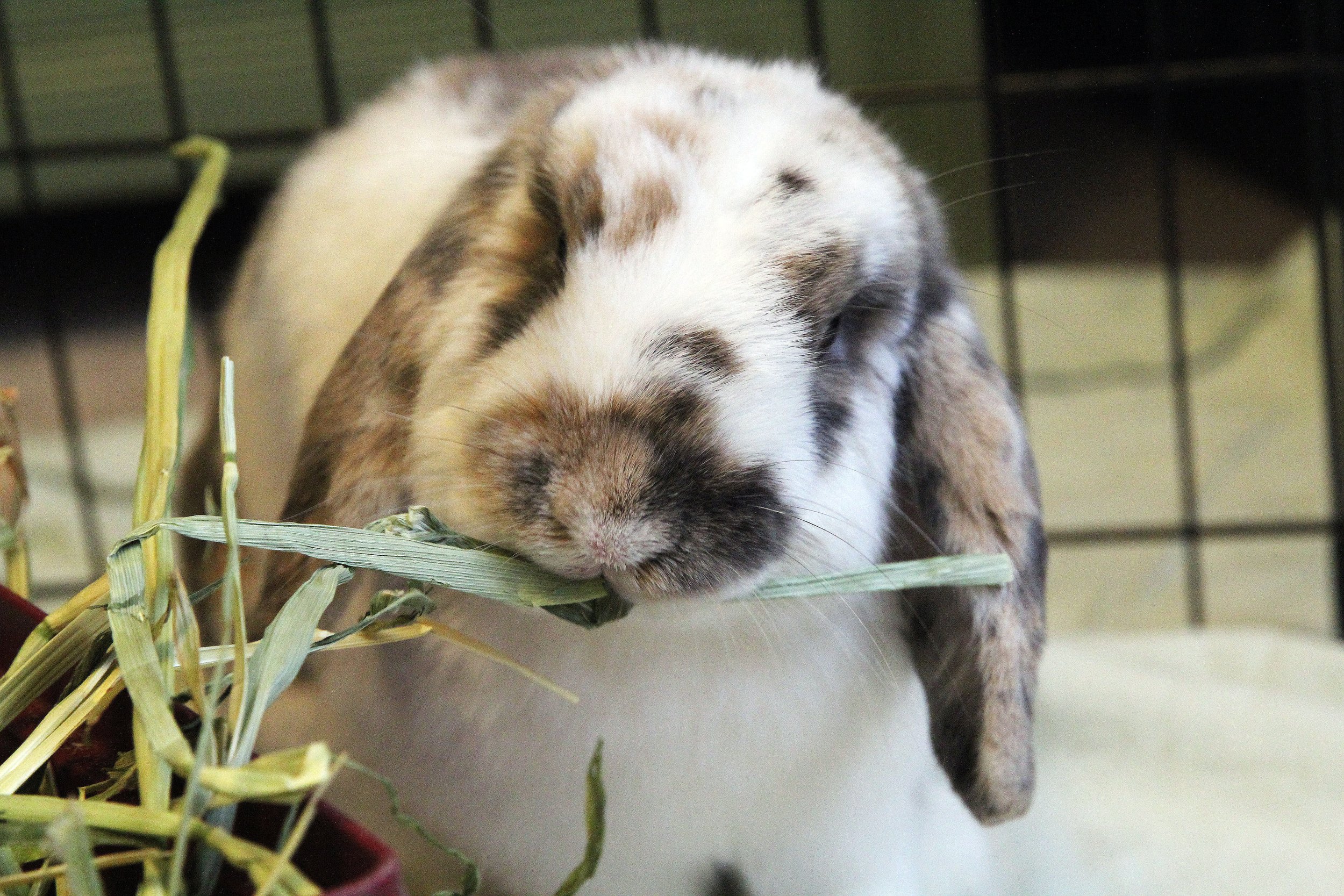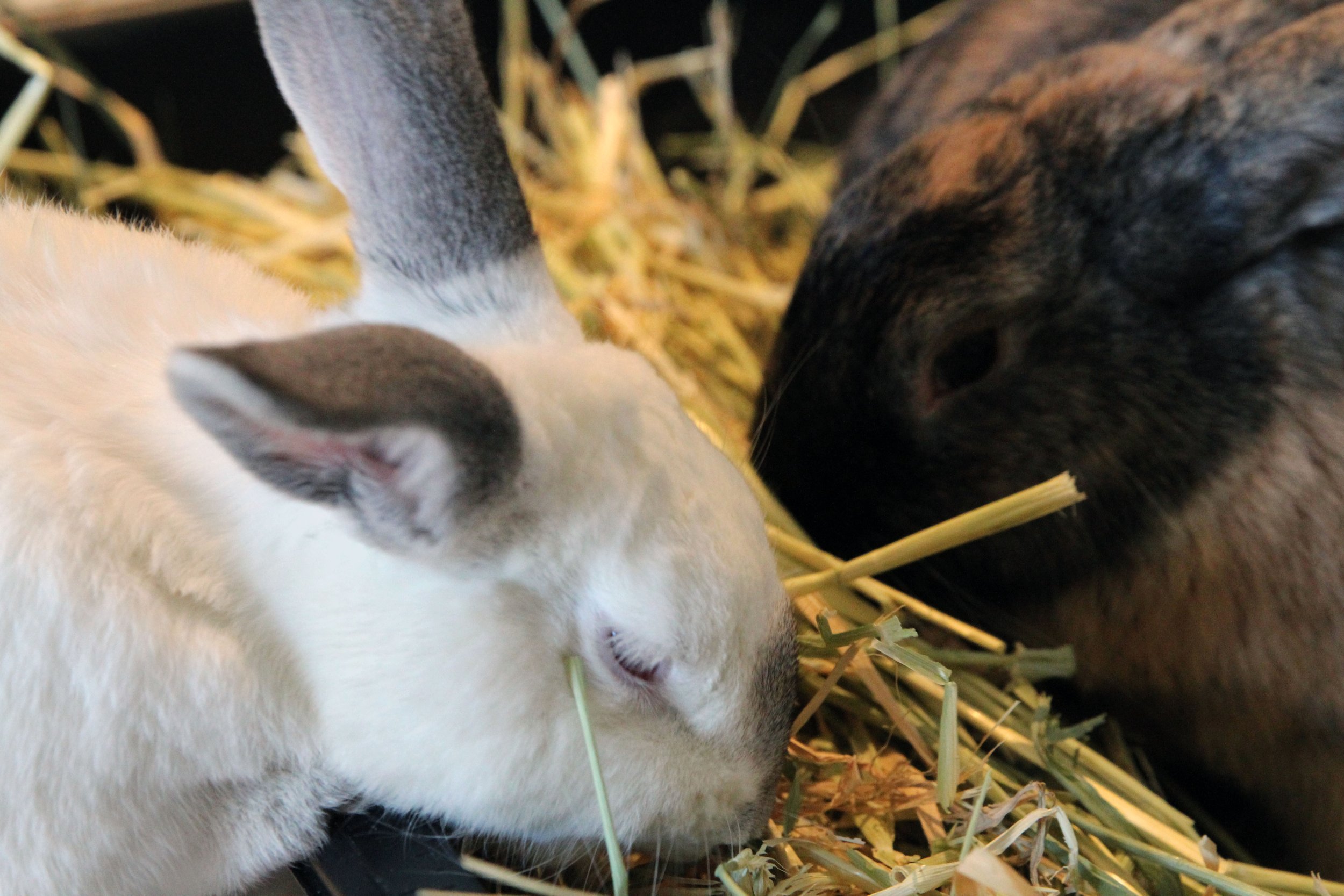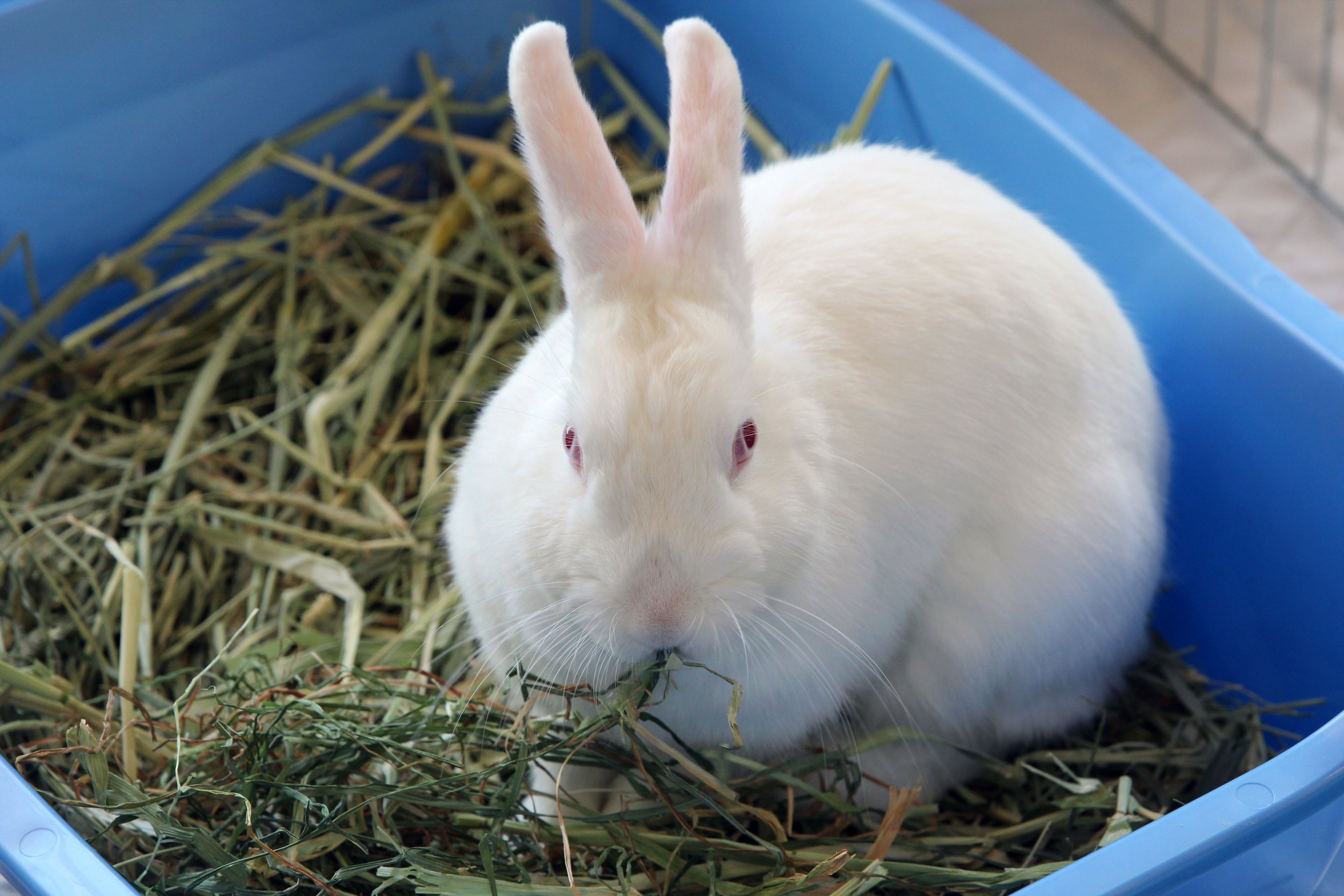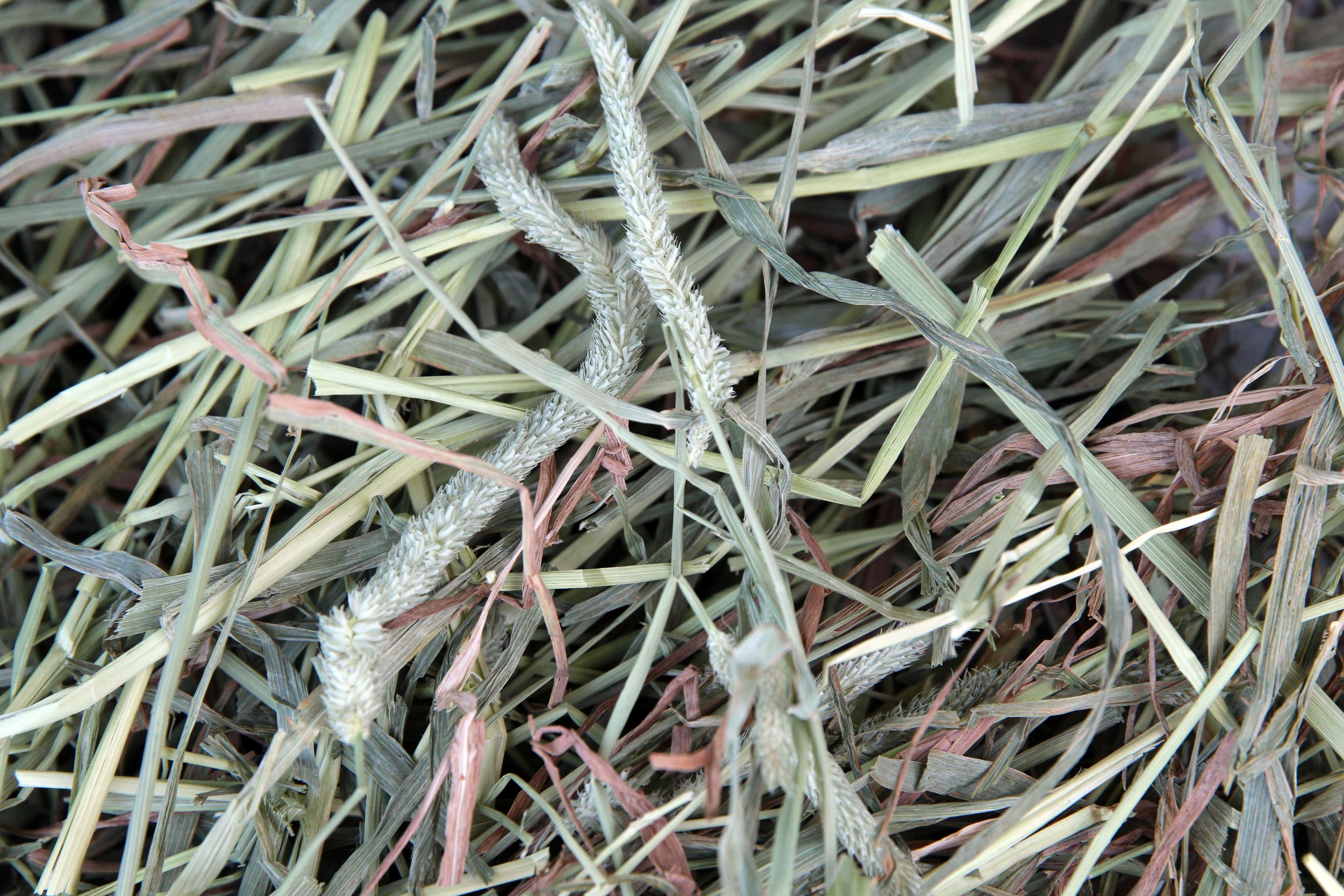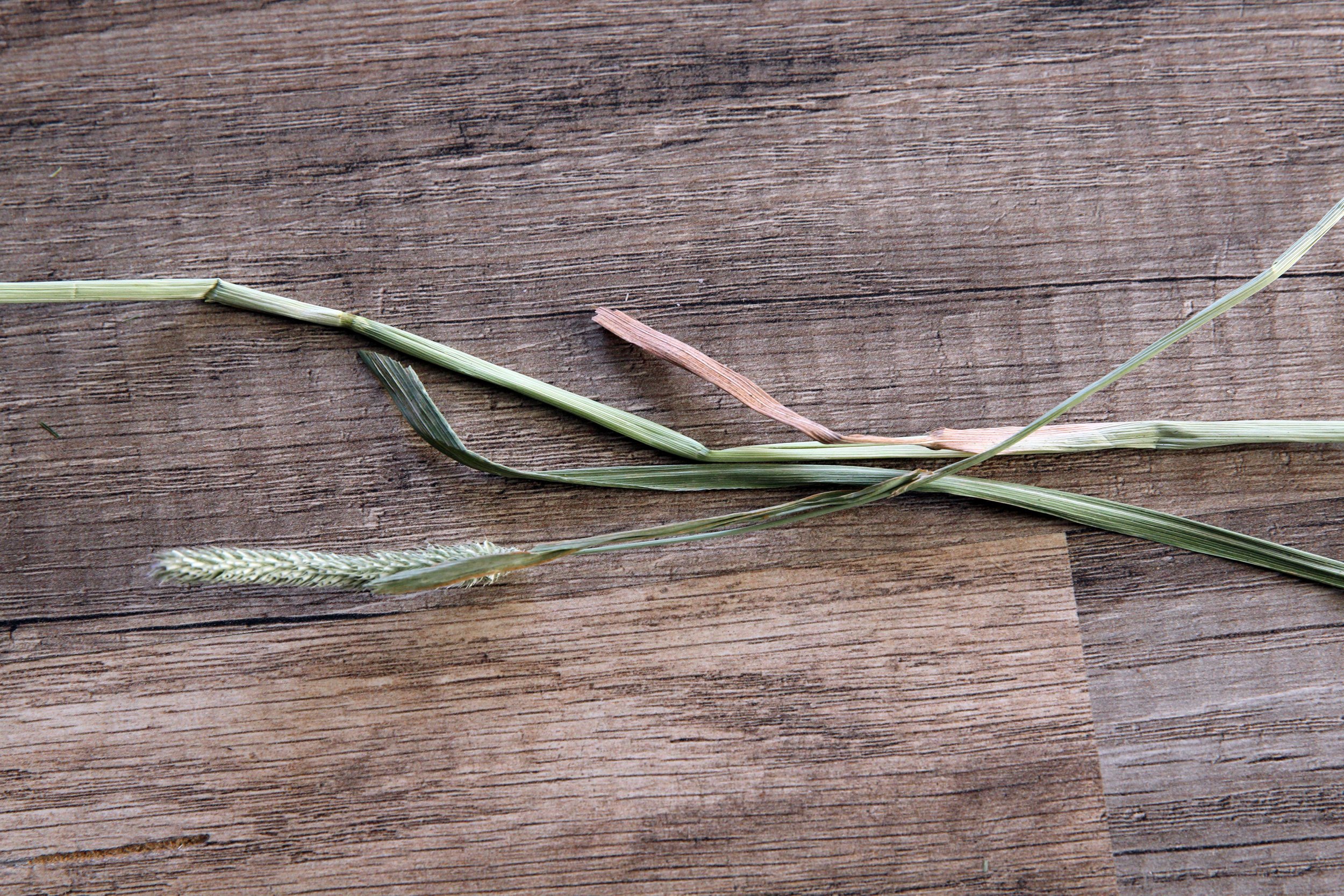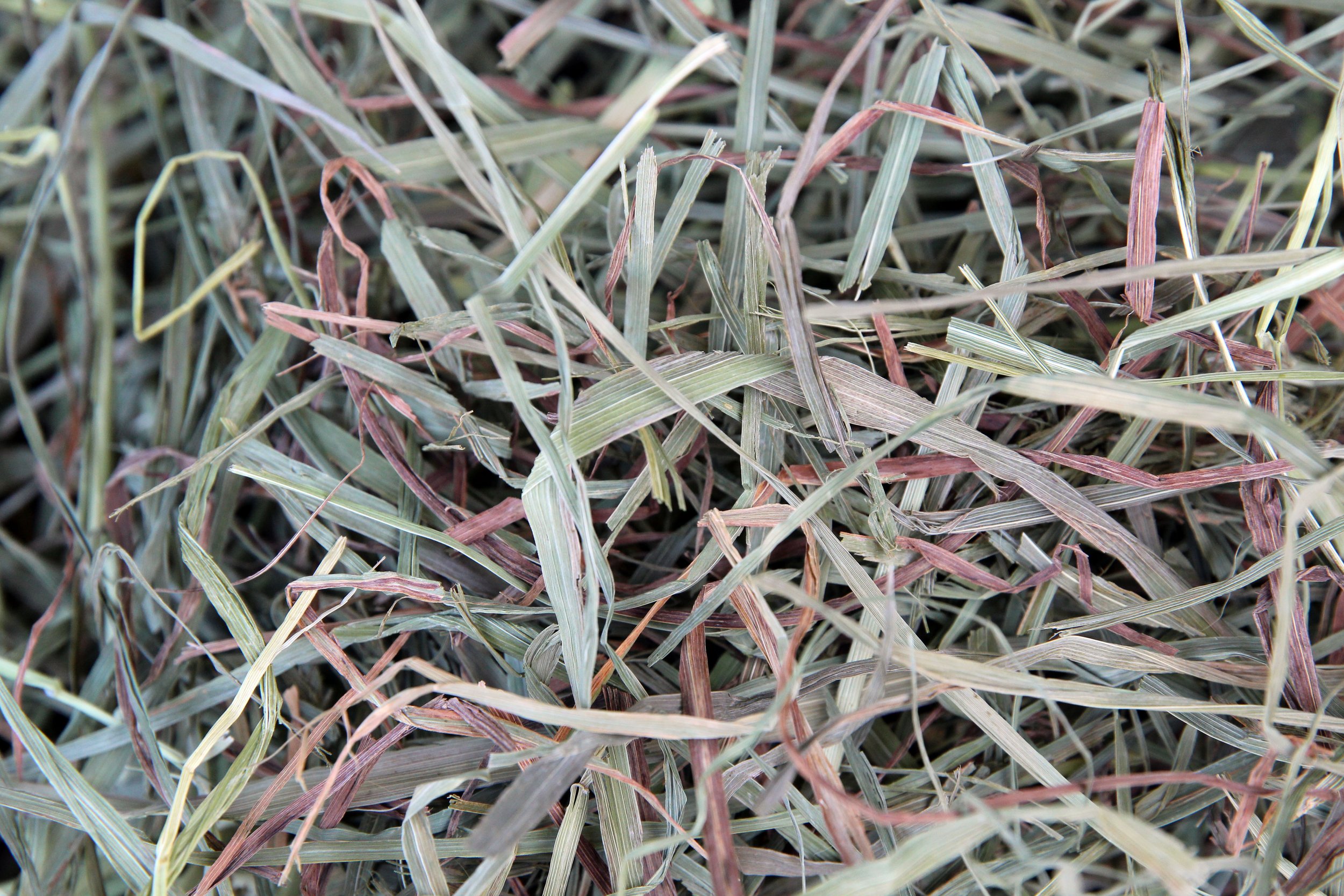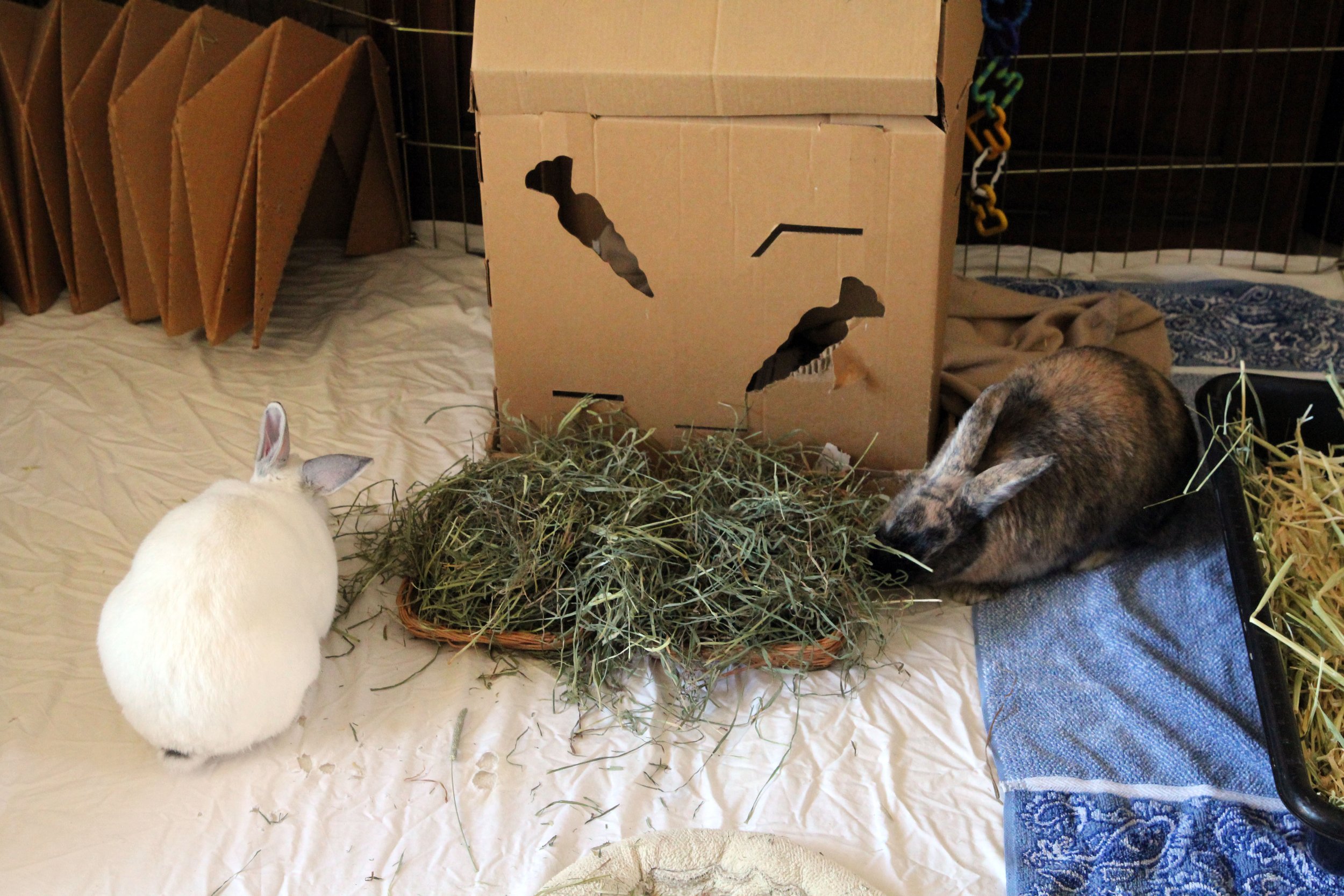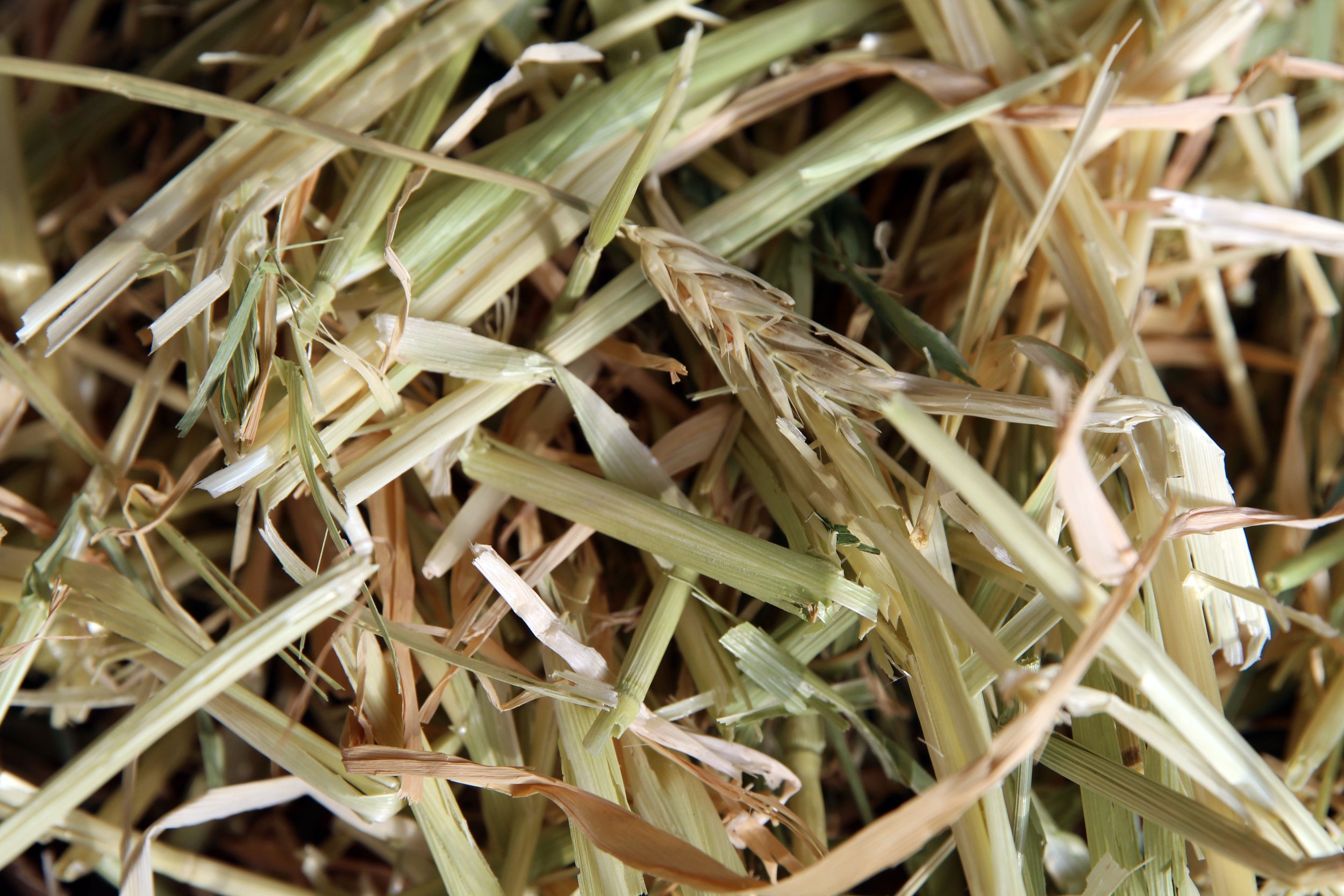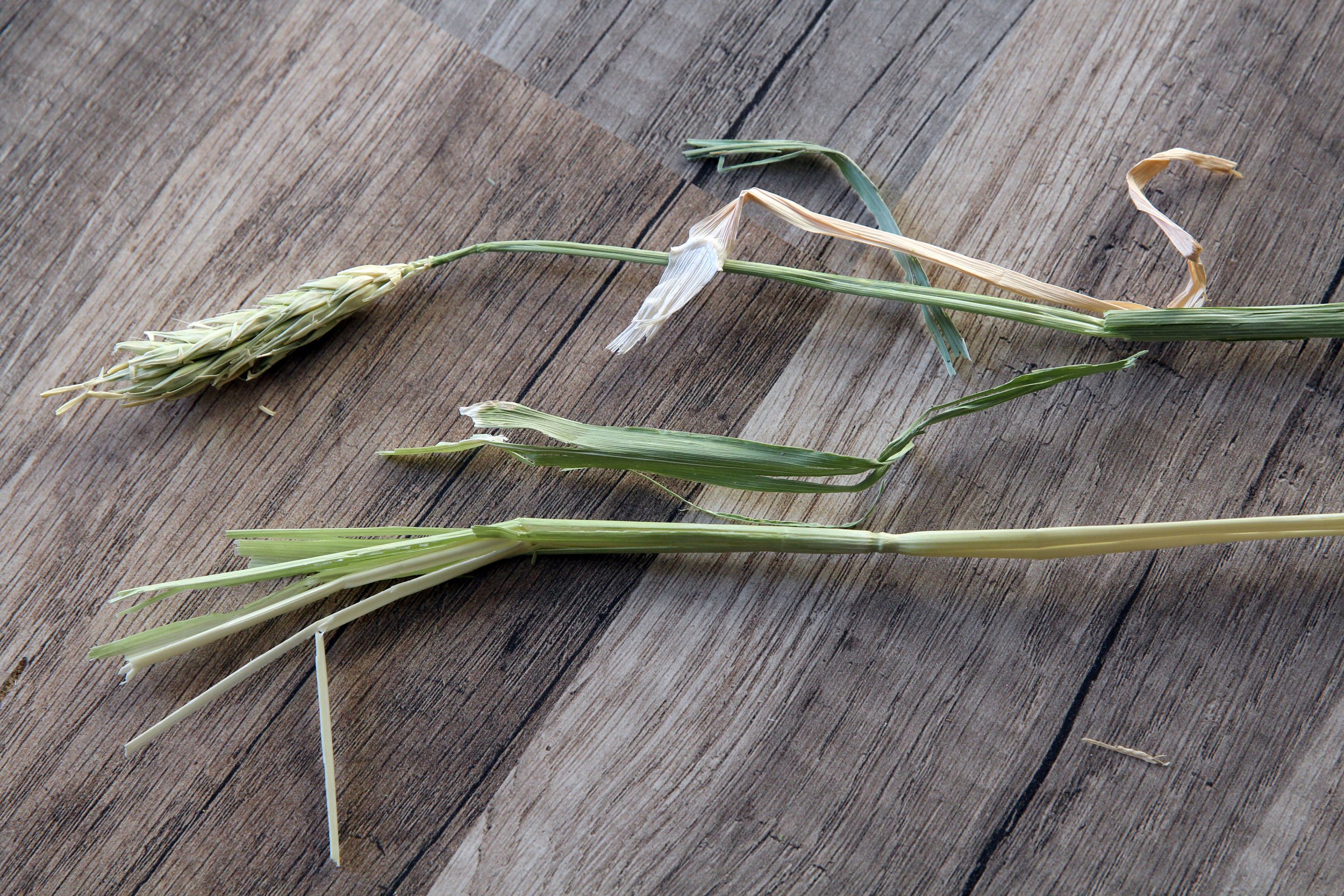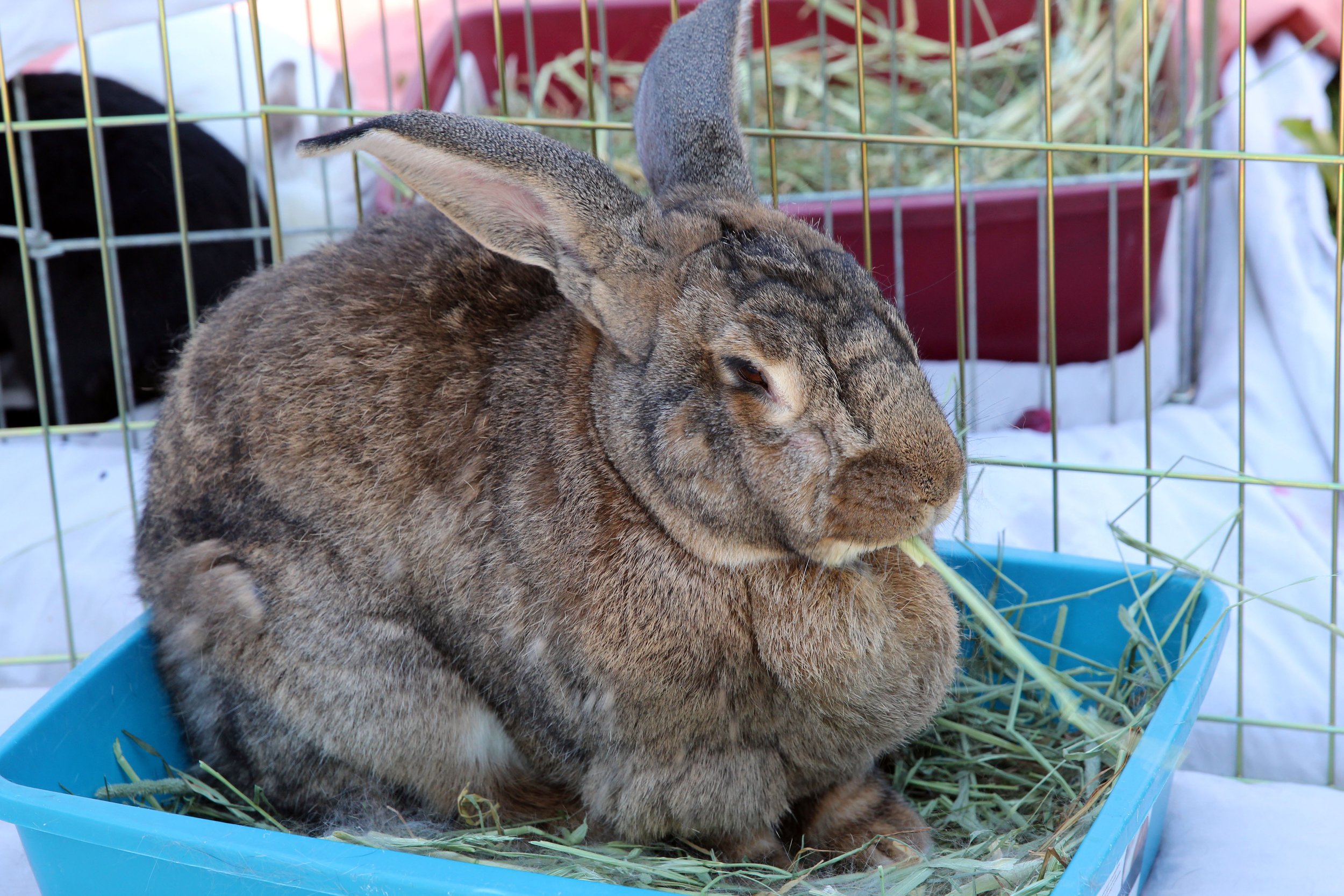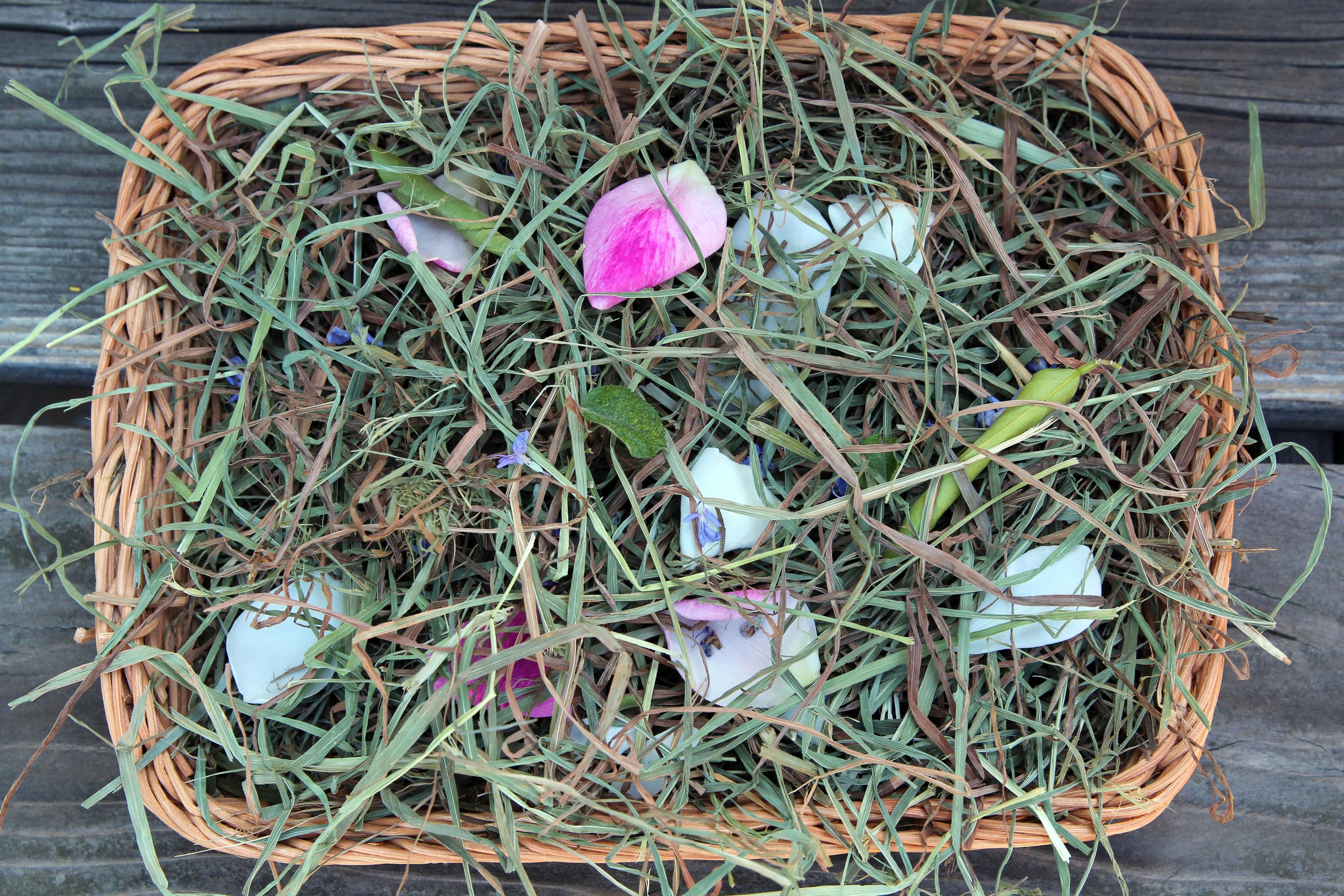Hay Talk
Did you know that a rabbit's proper diet should consist of 85% hay?
It should be made available 24 hours a day, 7 days a week and 365 days per year!
Why, you may ask?
Hay provides the fiber needed for a healthy digestive system. The high fiber keeps things flowing through the gut nicely. Unlike cats, rabbits cannot throw up a hairball and if that hair gets blocked in the gut, your rabbit can go into GI Stasis, which can be deadly. Not only is hay good for digestive health, but it also wears the rabbits’ teeth which are constantly growing. The lack of chewing hay can lead to very painful sores in the mouth causing the bunny to stop eating and then can cause GI Stasis.
Our buns have all sorts of different hays available to them. We even mix the hays to allow them to "forage" as they would in nature. They have a ball with a big pile of hay.... We have "tumbleweed" bunnies.
Let's take a look at the kinds of hay that are good for your rabbit.
TIMOTHY HAY
Timothy Hay is what most doctors will recommended for your rabbits to eat. The dried blades of grass are a mixture of green and brown in color and the cattails are long and green. It is higher fiber than other hays and gives the daily dental workout needed to grind down those growing teeth.
2nd Cut Timothy is less coarse than 1st cut, with narrower leaves, few stalks and medium to small seed heads. Perfect for those that won’t eat 1st cut or to add some variety to hay buffet.
3rd Cut TIMOTHY HAY
3rd Cut Timothy Hay is a perfect hay for a treat. We have never met a rabbit who did not go bonkers for this hay. It is green in color with a touch of brown, ultra soft, nearly 100% leaf with very little stem and cattails. The smell is sweet!
ORCHARD GRASS
Orchard Grass is a lush gray green, sweet smelling hay with a soft texture and very little brown grass. Orchard can be used to supplement the protein needs of wool bearing rabbits such as Angoras and Jersey Woolleys or simply to add variety to the diet.
THREE-WAY HAY
Three-way Hay is a mixture of Oat, Wheat and Barley Hay. Many bunnies love the variety of three hays in one.
ALFALFA
Alfalfa Hay is a high fiber legume with the same long strand fiber found in grass hays but with more protein, energy and calcium. It should primarily be given to baby bunnies until the age of 6 months, lactating animals, or older rabbits that are losing weight. The succulent taste stimulates the appetite of ill or post surgical animals. It has lots of stocks and flat green leaves.
HOW TO GET YOUR RABBIT TO EAT HAY.
It can be helpful to ensure that hay is the only food available for several periods throughout the day. If your rabbit continues to resist hay, try to scent it by rubbing their favorite vegetable or fruit onto the hay to tantalize their taste buds. You may need to do this for several days before they appreciate the hay.
Changing the way hay is served or presented can provide stimulation and may just make your rabbit curious. For example, you can provide small handfuls of hay around the enclosure, place it in a basket and mix in some rose petals, apple leaves or even dried citrus leaves. Make it fun by filling a cardboard rolls or boxes with hay for them to pick out.
WHERE IS THE BEST PLACE TO BUY HAY?
Buying hay from a pet store can get costly and sometimes the hay has been sitting on shelves for awhile. We found the best places to buy better quality hay are: local feed stores, a bunny rescue like Bunny Bunch, or online. Small Pet Select has great hay and we earn a commission when you shop using our link!
HOW TO STORE MY HAY?
Tips for Storing
Hay should be stored in a dry area away from sunlight. Sunlight bleaches the hay, reducing nutrients and also taste. Hay that is stored in damp areas or exposed to moisture becomes moldy, and this can be toxic to rabbits. Hay can become contaminated if stored in an area allowing access to rats and mice.
Hay needs to “breathe,” so avoid storing in airtight plastic tubs, which can off-gas chemicals and may not be food safe anyway. If stored correctly, hay will remain fresh for 12 months. Storing hay in a cardboard box or canvas laundry bag is perfect.


